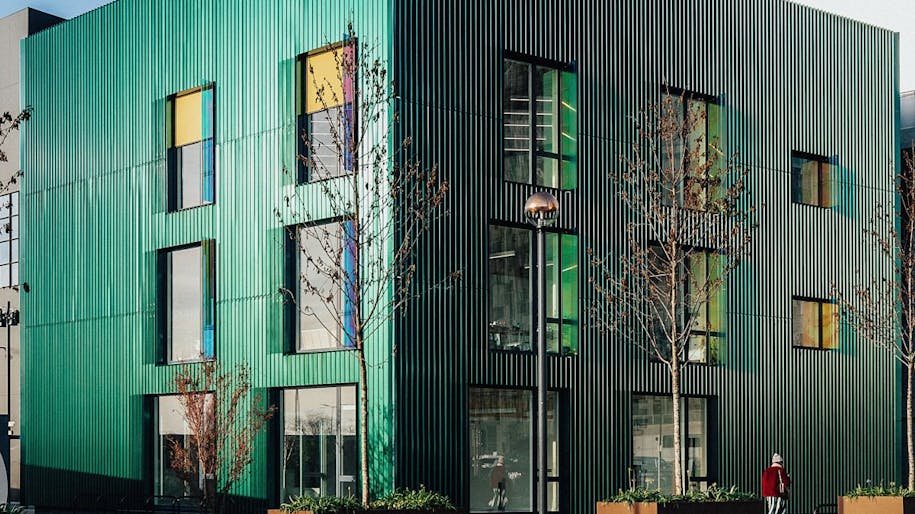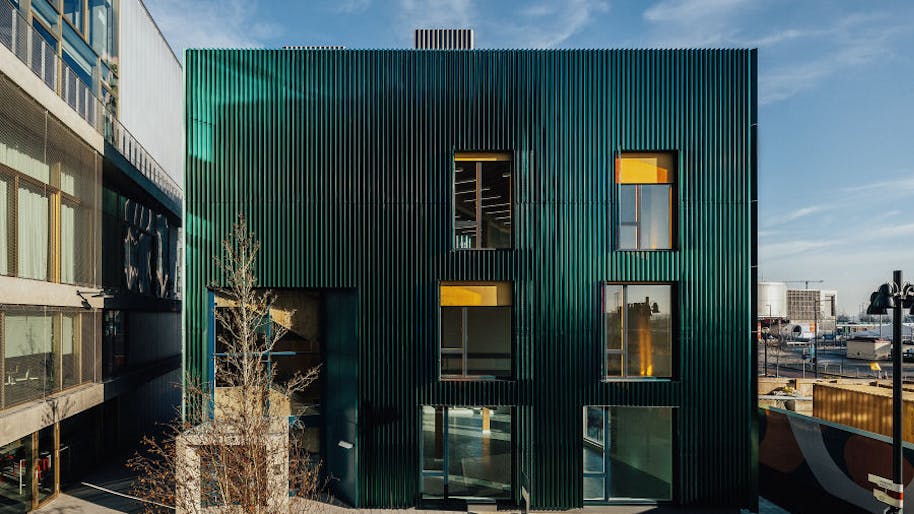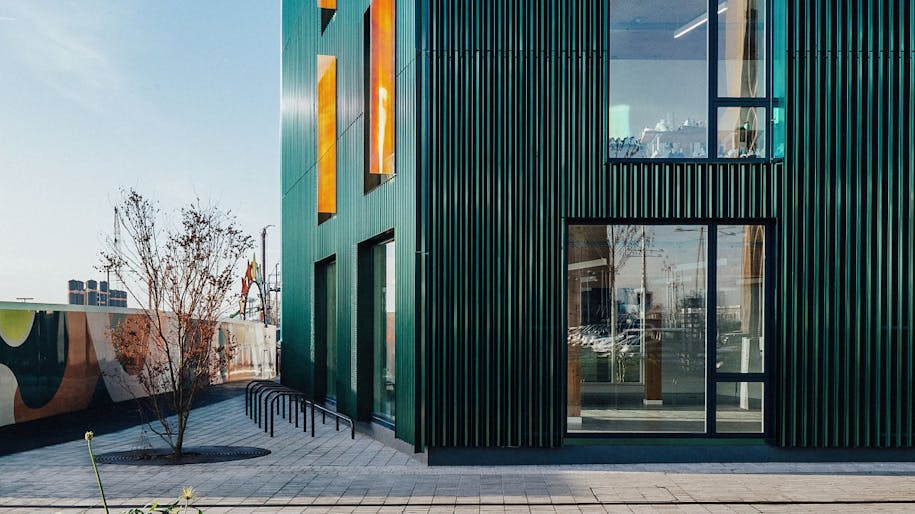
Meet Mole Architects
The practice
Founded by Meredith Bowles, Mole Architects combines innovation and individuality with a commitment to cutting-edge sustainability. It created the iconic Balancing Barn in Suffolk for Living Architecture and the first developer-led co-housing scheme in Cambridge, Marmalade Lane. The practice has a reputation for ‘green and gorgeous’ buildings, which you can see in its buildings for The University of Cambridge’s new Eddington site and in its masterplan for a new hillside village in Hsinchu, Taiwan. It was awarded the RIBA Manser Medal and the British Homes Award.
The buildings
These two buildings have their own identities. One is compact with an exterior that changes colour like a burning gas flame, while the other is stacked like a ziggurat. They were inspired by an old photograph of male and female forms. Both buildings are clad in metal: C2 in a striking CorTen weathered steel, D2 with an iridescent painted finish that changes colour with the light. Internally timber was chosen for its renewable low-carbon properties, and the exposed beams and wooden ceiling emit warmth. External shutters keep each building cool in summer, and top-lit studio spaces capture natural light. C2 will be fitted out with a test kitchen and studios for those working in the food and beverage industry, while D2 will offer studio and office space.


